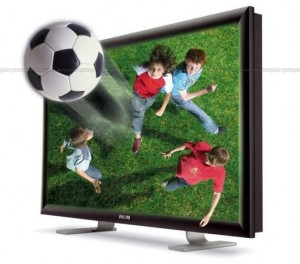ESPN: 3D increases viewer engagement
November 5, 2010
 Findings from the an extensive 3DTV viewer study, conducted by ESPN during the summer’s 2010 World Cup tournament has revealed that people remember TV ads better in 3D than in 2D. ESPN used Disney’s Media and Ad Lab in Austin to measure viewer response to its inaugural 3D coverage. It was, for the most part, favourable.
Findings from the an extensive 3DTV viewer study, conducted by ESPN during the summer’s 2010 World Cup tournament has revealed that people remember TV ads better in 3D than in 2D. ESPN used Disney’s Media and Ad Lab in Austin to measure viewer response to its inaugural 3D coverage. It was, for the most part, favourable.
“We don’t know how much of this is due to the novelty of the 3D experience,” said lead researcher Duane Varan, executive director of the Interactive Research Institute and the inaugural chair of New Media at Murdoch University in Perth, Australia. “We tried to get around that with 2D… but we won’t know the answer to that for a while.”
ESPN conducted 1,000 testing sessions comprising 2,700 lab hours over a five-day period, comparing the responses to traditional 2D television with 3D. Five different brands of 3DTV sets were used, and three display types: Plasma, LCD and a DLP. Some subjects watched a full game, half in 2D and half in 3D. Others watched three full games in a single day, exposing them to 3D viewing for 4.5 hours. Still others watched just one full game in 3D daily for each of the five days.
Among other results, ESPN found that cued recall of ads increased from 68 per cent in 2D to 83 per cent in 3D. Purchase intent went from 49 to 83 per cent. Ad ‘liking’ went from 67 to 83 per cent. Just four ads appeared in the 3D World Cup coverage, Varan said, and only two were comparable in both 2D and 3D, so those were used. One was from Gillette; the other, from ‘Toy Story 3’. The 3D ads were considered more effective, “all things being equal”.
The programming itself also receiver higher marks in 3D than 2D. ‘Enjoyment’ increased from 65 to 70 per cent; ‘involvement’, from 67 to 70 per cent; and ‘presence’, from 42 to 69 per cent.
Other posts by Nik Roseveare:
